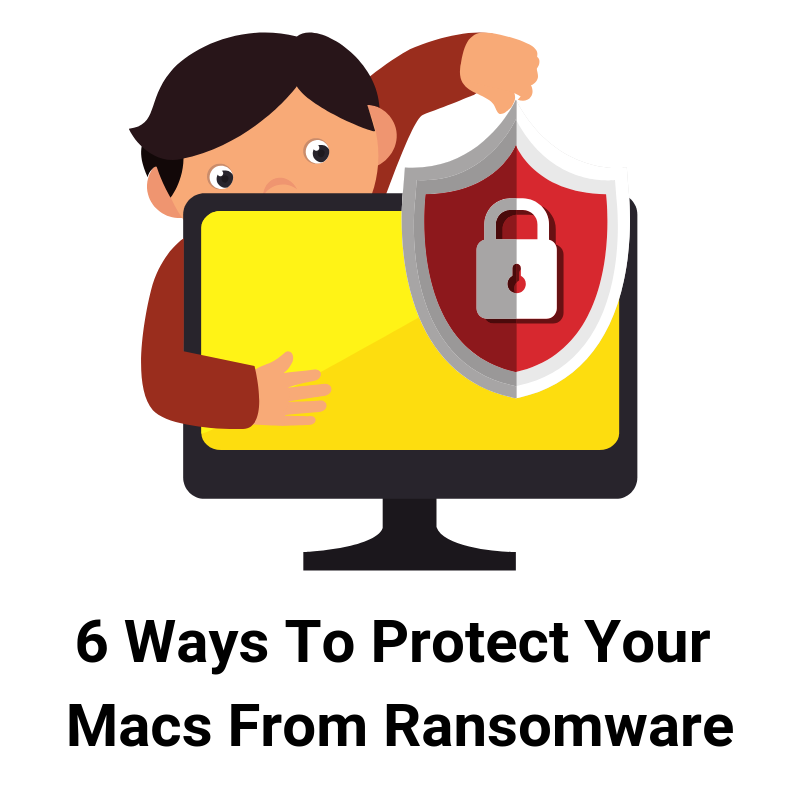In 2019, Ransomware continues to be the leading form of cyber attack for small and medium businesses. During the period from Q2 2016 to Q2 2018, more than three-quarters (79%) of managed service providers had clients that were hit by ransomware.
So what is ransomware and how can you protect the Mac computers at your business from a ransomware attack?

What is Ransomware?
Ransomware is a type of malicious software, or malware, designed to deny access to a computer system or data until a ransom is paid. Ransomware can present itself in multiply ways, but typically it's transmitted through sneaky emails or pop-ups and once downloaded encrypts all user data and holds it for ransom.
How Do I Protect My Business?
If you are worried that you are at risk, don’t panic. We have a few steps you can take to lower your chances of contracting not only ransomware, but other forms of malware as well.
- Think before you click. Never download or open attachments and links from unknown senders. And when you know the sender you should still take precautions. Make sure this was an attachment you were expecting and double-check that their email is real. Often with malware, users email accounts become hacked, causing fake emails to be sent on behalf of the victim. If someone's email address seems different or misspelled, it's better to err on the side of caution and verify all credentials before downloading or clicking on anything.

- Be proactive. In addition to your basic ad-blocker, invest in a reliable, paid anti-virus program. Apple users, listen up! Despite what you may have heard, Apple products are no longer immune to malware or ransomware. This list is focused on antivirus for personal use, but many of these companies offer Enterprise Mac Antivirus solutions as well. Ensuring all of your business's endpoints have antivirus protection is one of our Mac Best Practices, click here to learn more.
- Remove browser clutter. Be sure to remove Adobe Flash, Adobe Reader, Java, and Silverlight plug-ins from your browser. These should only be active when needed as it makes your device more susceptible to malware. Don't worry, the next time you need one of these plug-ins you'll be prompted to download the most recent version available so there's no need to keep the old versions around.
- Backup your data. Your computer should never be the only place you store important data. There are plenty of easy ways to back up your data, but a we recommend maintaining redundant backups of all your business data; such as one on an external drive and the other in a cloud-based drive such as Google Drive, or DropBox.
- Always stay updated. Keep your machines’ operating systems up to date. In many cases, the WannaCry ransomware attacks were preventable as Windows created a ransomware patch in an update available eight weeks prior to the attack, but users just kept putting it off. We advise our clients to implement a Device Management strategy so all updates happen either automatically or with a simple click.
- Take action before it's too late. If you own a business create a security plan for your Mac technology. If you're not ready to execute a device management solution, make sure to schedule times for the entire office to update their operating systems, because it only takes one computer to infect an entire network.
For more information on preventative measures and what you can do to make sure your business is protected get in touch with our Business Consulting experts. We are here to keep your business safe from any malicious threats.